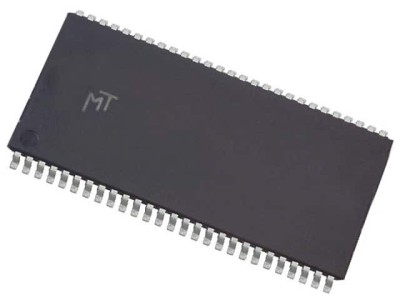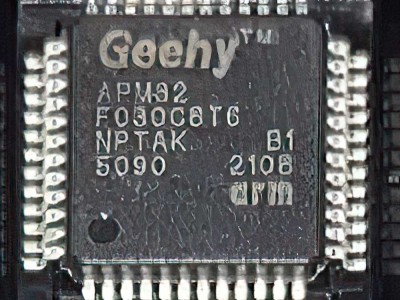Common Troubleshooting Issues with GD32E103C8T6 Microcontroller
The GD32E103C8T6 microcontroller is a Power ful and cost-effective option for Embedded systems, often compared to STM32 series devices. However, as with any complex piece of hardware, users may encounter issues during development or implementation. These problems can arise from hardware faults, software bugs, incorrect configurations, or even issues in the development environment.
In this section, we will explore some of the most common troubleshooting problems and solutions associated with the GD32E103C8T6 microcontroller. Whether you're an experienced embedded developer or just starting with microcontrollers, understanding these issues will save you time and improve your overall experience.
1. Power Supply Issues
Problem:
A common issue with microcontroller development is ensuring the correct voltage levels for the power supply. The GD32E103C8T6 operates at a 3.3V voltage level, which means supplying it with a higher voltage or unstable power can lead to malfunctioning or even permanent damage.
Solution:
Ensure that your power supply is stable and provides a constant 3.3V voltage output. It's also recommended to use a voltage regulator to prevent fluctuations that might affect the microcontroller. Check the power pins (VDD and VSS) to ensure they are correctly connected and there's no short circuit.
To troubleshoot power-related issues:
Use a multimeter to check the voltage level at the microcontroller’s power pins.
Verify that the power source is within the required specifications.
Ensure that capacitor s are properly placed to smooth out any power supply noise.
2. Incorrect Clock Configuration
Problem:
The GD32E103C8T6, like many other microcontrollers, has a clock system that needs to be correctly configured for the microcontroller to run at the desired frequency. An incorrect configuration can lead to clocking issues, resulting in erratic behavior or failure to start.
Solution:
First, check if the system clock is properly set up. The GD32E103C8T6 supports both internal and external oscillators. Ensure that:
The HSE (High-Speed External) or HSI (High-Speed Internal) oscillators are configured correctly in the firmware.
The PLL (Phase-Locked Loop) is correctly enabled and configured for the desired clock frequency.
The clock dividers are properly set to avoid overclocking or underclocking the microcontroller.
A good practice is to check the microcontroller’s clock output using an oscilloscope to confirm that the system clock is running at the correct frequency.
3. Booting Issues and Firmware Corruption
Problem:
Sometimes, the microcontroller may fail to boot due to corrupt firmware or an improperly configured bootloader. This could be caused by incomplete flashing or errors during the firmware upload process.
Solution:
To fix this issue, you can try the following steps:
Reflash the firmware using a reliable programmer/debugger, such as ST-Link or J-Link.
If the GD32E103C8T6 is stuck in bootloader mode, use the appropriate jumper settings or software to exit the bootloader and attempt a reflash.
Check if the reset pin (NRST) is functioning correctly, as improper resets may prevent the microcontroller from booting.
If you're consistently facing corruption during flashing, consider verifying the integrity of your firmware file and the stability of your flashing tool or IDE.
4. Peripherals Not Working
Problem:
Peripheral devices (such as UART, I2C, SPI, GPIO) may not work properly, which can be due to incorrect configuration or wiring issues.
Solution:
To resolve peripheral issues:
Double-check your wiring and connections: Ensure that all peripheral components are connected properly according to the datasheet.
Verify the GPIO configuration: Make sure that the correct pins are set for the respective peripheral functions.
Check the peripheral initialization code: For example, if using UART, ensure the baud rate, stop bits, and parity settings match between the microcontroller and the connected device.
Use debugging tools: Set breakpoints in your firmware to check whether peripheral initialization routines are being executed properly. You can also use a logic analyzer to monitor the signals and confirm data is being transmitted correctly.
5. Debugging Challenges
Problem:
Debugging is often the most challenging aspect of embedded system development, especially when you can't track down the issue. Problems might range from issues with the IDE or the debugger to firmware bugs that only surface during specific conditions.
Solution:
Ensure correct debugger settings: Double-check the settings in your IDE to make sure the debugger is correctly configured for the GD32E103C8T6. Ensure the debugger is connected and functioning properly.
Use breakpoints and watchpoints: Place breakpoints in your code to identify the exact line where the program fails. Also, use watchpoints to monitor the values of specific variables.
Check for uninitialized variables or stack overflows: Sometimes debugging can be elusive due to uninitialized Memory or corrupt stack pointers. Use tools like Valgrind or static analysis tools to detect such issues.
Simplify the code: If the problem persists, simplify your code to the smallest possible example that reproduces the issue. This will help isolate the problem.
6. IDE and Software Configuration Issues
Problem:
The GD32E103C8T6 microcontroller is compatible with a variety of IDEs and development environments, including KEIL, IAR Embedded Workbench, and System Workbench. However, issues can arise from incorrect project settings, incompatible versions, or improper toolchain configurations.
Solution:
To resolve IDE-related issues:
Check the toolchain version: Make sure that the compiler and debugger are compatible with the GD32E103C8T6. Sometimes, newer versions of IDEs or toolchains may not fully support the microcontroller.
Verify the project settings: Ensure that the project is configured to use the correct device and that all relevant options (such as optimization levels, debug options, and include directories) are set correctly.
Reinstall the IDE: If the issues are persistent and seem related to the IDE itself, consider reinstalling it and ensuring you have the correct drivers installed for your programming/debugging hardware.
Advanced Troubleshooting Solutions for GD32E103C8T6 Microcontroller
Now that we've covered the most common issues, let's delve into some more advanced troubleshooting scenarios and solutions for the GD32E103C8T6 microcontroller.
1. Handling Watchdog Timer Resets
Problem:
The watchdog timer is a vital component that helps prevent the microcontroller from getting stuck in an infinite loop or failing to respond. However, sometimes the watchdog timer may unexpectedly reset the microcontroller, leading to unintended restarts.
Solution:
Increase the watchdog timeout: If your program performs long operations without resetting the watchdog timer, it might trigger a reset. Increase the timeout value if needed.
Watchdog disable: For debugging purposes, you can disable the watchdog timer temporarily to see if it's the source of the resets. Remember to re-enable it once you're done debugging.
Use a separate watchdog: In critical applications, consider using an external watchdog timer to ensure more robust operation, as it can be configured with a longer timeout and more flexibility.
2. DMA (Direct Memory Access ) Issues
Problem:
DMA is a powerful feature that allows for high-speed data transfer between peripherals and memory, but improper configuration or handling can cause unexpected behavior or data corruption.
Solution:
Check DMA configuration: Ensure that the DMA controller is configured correctly. Double-check the source and destination addresses, transfer direction, data size, and peripheral-to-memory or memory-to-peripheral direction.
Use DMA interrupts: Enable DMA transfer complete and error interrupts to track the status of your DMA channels. This will help you quickly identify if and when a DMA failure occurs.
DMA and peripheral synchronization: Ensure that the DMA operation is properly synchronized with the peripheral it’s interacting with. If the DMA controller starts a transfer before the peripheral is ready, data loss or corruption may occur.
3. Low-Level Hardware Debugging
Problem:
Sometimes the issue might not be immediately apparent in the firmware or software but may lie within the hardware connections themselves, such as faulty pins or improper connections to external devices.
Solution:
Use an oscilloscope or logic analyzer: For low-level debugging, an oscilloscope or logic analyzer is invaluable. You can use it to measure the voltage on various pins and check if the signals are as expected.
Check the PCB design: A faulty PCB design can cause various issues like signal integrity problems. Inspect the PCB for any short circuits, poor solder joints, or incorrect components.
Measure the current draw: If the microcontroller is consuming an unusual amount of current, this could indicate a short circuit or a faulty component. Measure the current draw at different stages of operation to pinpoint the issue.
4. Software Debugging in Low Power Mode
Problem:
The GD32E103C8T6 microcontroller offers several low-power modes to conserve energy. However, when transitioning between low-power modes, developers may experience issues related to peripheral availability, wake-up timing, or clock sources.
Solution:
Properly configure low-power modes: Ensure that your software correctly configures the microcontroller for the desired low-power mode. Review the datasheet and reference manual for the specific low-power mode settings.
Wake-up configuration: If the microcontroller is in a low-power mode, ensure that the wake-up sources (like external interrupts or timers) are correctly configured to wake the microcontroller up when needed.
5. Temperature and Environmental Factors
Problem:
The GD32E103C8T6 is sensitive to extreme temperatures and environmental conditions. Operating outside the recommended range may cause instability or permanent damage to the microcontroller.
Solution:
Monitor temperature: Keep track of the operating temperature of your microcontroller, especially if it's deployed in environments with fluctuating temperatures. Use external temperature sensors if necessary.
Use protective enclosures: If your device will be used in harsh environments, consider using protective enclosures to shield the microcontroller from dust, moisture, and excessive heat.
Conclusion
Troubleshooting issues with the GD32E103C8T6 microcontroller can be challenging, but with the right approach, most problems can be resolved quickly. Whether the issue is related to power supply, peripherals, firmware corruption, or debugging difficulties, understanding the root cause and applying the correct solution will lead to a successful project.
By following the troubleshooting tips and solutions presented in this article, you'll be well-equipped to tackle common and advanced issues with the GD32E103C8T6 microcontroller. Always remember to take a methodical approach, use debugging tools effectively, and refer to the microcontroller’s documentation for guidance. Happy debugging!
If you're looking for models of commonly used electronic components or more information about () datasheets, compile all your procurement and CAD information in one place.


